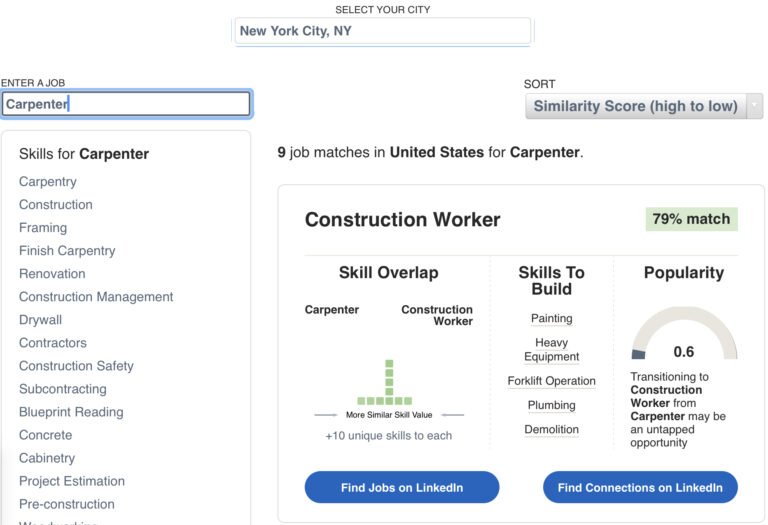NEWS
LinkedIn Launches A New Tool For Job Seekers

LinkedIn’s ‘Career Explorer’ is a new tool designed to help job seekers transition into a different field.
The tool identifies which careers an individual may be qualified for based on skills associated with their previous job.
Career Explorer provides job seekers with:
- Insights to identify the right career path.
- Learning opportunities to get any additional skills they need.
- A community to connect professionals to new opportunities.
The launch of this tool comes at a time when 140 million people are expected to be out of work due to the pandemic.
People are searching for jobs on LinkedIn in record numbers. Nearly 40 million each week, the company says.
But here are some more encouraging statistics:
- 96% of hiring managers say they would hire someone who had been laid off due to the COVID-19 pandemic.
- 3 people are getting hired on LinkedIn every minute.
- There are currently over 14 million available job postings.
Learn how Career Explorer can be used to find new opportunities.
LinkedIn Career Explorer
LinkedIn’s Career Explorer tool helps people find career paths they may be well-suited for.
The tool matches people up with new opportunities by mapping existing skills to thousands of available job titles.
“For example, a food server in the U.S. has a 71% skills similarity to a customer service specialist, one of the in-demand jobs we identified with Microsoft as part of our broader reskilling commitment, making it a possible career transition based on skills.
Our data also shows that 26 million members globally could have all the skills they need to qualify for one of the most in-demand jobs, customer service specialist, by learning just two more skills.”
LinkedIn says comparing skills across jobs can help users find the right job for them.
Career Explorer works by analyzing jobs to calculate a metric called skills similarity.
Skills similarity allows Career Explorer to understand how well one job might compare to another
It compares two jobs and assigns a score between 0 to 100.
For example, the skills similarity score between a food server and a customer service specialist is 71.
That indicates there is a higher skill overlap, which helps with transitioning from one role to the other.
“The similarity score reflects both the overlap of common skills between two jobs as well as the relative importance of those skills for each job.”
LinkedIn also draws from user data to calculate skills similarity scores.
“In order to identify popular job transitions, we look at the profile changes members make to their job history and calculate how often members move from one job to another.”
How to Use Career Explorer
Career Explore is exceptionally easy to use and doesn’t require users to be logged in.
Visit the landing page here and scroll down until you see the tool.
Then enter the name of your previous job title and the city you live in.
Career Explorer will now be able to populate a list of jobs with high skills similarity scores.
This is what Career Explorer returns for a carpenter in New York City, for example.

Career Explorer will only recommend jobs when there are postings available in your city.
You can see in the example above how there’s a direct link to “Find Jobs on LinkedIn.”
The link will bring you to a list of job postings in your area that can be immediately applied for.
There’s also a “Find Connections on LinkedIn” button which will identify any connections who have had the job you’re interested in.
LinkedIn notes all data represents aggregated information from the last 5 years.
A beta version of Career Explorer is now available in English, with enhancements to be added in the coming months.
Sources: LinkedIn Official Blog, International Labor Organization


















